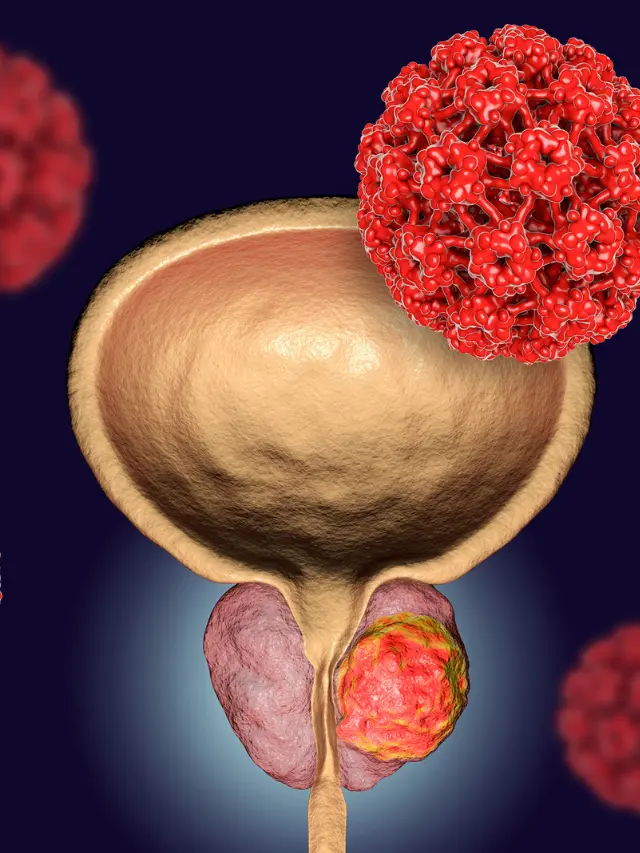Prostate cancer affects an individual in every six males. Most men who are approaching their 40s want to know at least something a little about prostate cancer as they don’t face any signs and symptoms of prostate cancer. This article will explain more about what is prostate cancer, the symptoms and treatments of prostate cancer, and the side effects of prostate cancer treatment.
What is Prostate Cancer?
The simple answer to what is prostate cancer is that this type of cancer starts when the cells which are present in the prostate gland grow out of control. The prostate gland makes some fluid that is a part of semen found only in males. It is present below the bladder, the hollow region to store urine, and in front of the rectum, the last part of the intestines.
The size of the prostate can vary depending on the age. In younger men, it is about the walnut’s size but it is much larger in older men.
Early Signs of Prostate Cancer
Generally, there are no warning signs of a little about prostate cancer. A person who is affected with a little about prostate cancer can’t even feel the pain or analyze the growing tumor pushing against anything else. Even though the disease is for years it is not easy to know it. That’s why regular screenings are so important for detection after knowing what is prostate cancer.
Symptoms of Prostate Cancer
It should be noted that a person who has prostate cancer may not suffer any symptoms at all. It is very important to be checked for A little about prostate cancer frequently, and especially more when you get older because prostate cancer can be detected before any symptoms show up at all in most cases.
Some men may experience the following symptoms of prostate cancer which are more likely to be a sign of a very common non-cancerous problem which is called an enlarged prostate.
- Difficulty in urinating or emptying the bladder
- Frequent urination or weak urine flow
- Dribbling urine after urinating
- Erectile dysfunction
- Pain in ejaculation
- A sudden need to urinate
If prostate cancer spreads to other parts of the body or breaks out of the prostate it can lead to advanced prostate cancer with other symptoms of prostate cancer causing other health problems knowing about what prostate cancer includes,
- Pain in the hip, back, or pelvis
- Problems in erection
- Blood in the urine or semen
- Unexplained weight loss
Treatments for Prostate Cancer
A patient may feel like making a decision quickly after knowing what is prostate cancer, but it’s important to give time to absorb the information and ask questions if there is anything he is not sure about.
There are many different treatment options such as active surveillance, chemotherapy or surgery, radiation or hormone therapy for treating prostate cancer and it is essential to discuss these with a trusted family doctor or an experienced Oncologist before making any decisions about what is prostate cancer.
Check out Magnifying Acid Reflux.
Some important things to consider include:
- The grade and stage of your cancer
- Age and expected lifespan
- Any other complicated health conditions
- Your feelings regarding the opinion of your doctors about the need to treat cancer right away
- The likelihood regarding the treatment to cure your cancer
- Possible side effects from each treatment
If time permits, seek a second opinion as it can give you more information and make a person feel more confident about choosing the treatment plan.
To summarize, one of the best things to do after knowing what is prostate cancer is to make sure to take care of it in the first place such as eating plenty of fruits and vegetables, taking vitamin E, and being informed about eating fats and red meat to reduce the risk of prostate cancer.
Causes
- It’s not satisfactory what causes prostate cancer.
- Specialists realize that prostate cancer starts when cells in the prostate foster changes in their DNA. A cell’s DNA contains the directions that guide a cell.
When is chemotherapy used?
Chemo is sometimes used if prostate cancer has spread outside the prostate gland and hormone therapy isn’t working. Recent research has also shown that chemo might be helpful if given along with hormone therapy. Chemo is not, however, a standard treatment for early prostate cancer.
Read also Top 10 Best Cancer Doctors in India.





